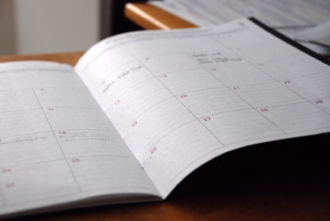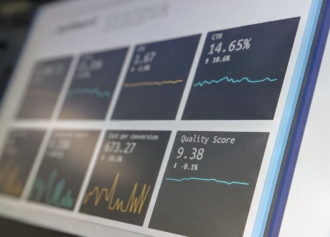I’m going to tell you something about productivity that most top-ranking Medium authors and famous startup gurus won’t.
It isn’t a hack that you’ll read in the latest Lifehacker headline or see among the top #lifehacks Tweets.
Instead, it’s a technique that, when integrated into your company culture, will lead to record productivity.
It is this: Rest.
Researcher and Silicon Valley consultant Alex Soojung-Kim Pang literally wrote the book on the importance of balancing work with rest — Rest: Why You Get More Done When You Work Less. In it, he explains that in order for work to work, there also must be rest:
Rest is not this optional leftover activity.
Work and rest are actually partners. They are like different parts of a wave. You can’t have the high without the low.
The better you are at resting, the better you will be at working.
Sure, if you work for a longer period of time you’re bound to produce more results. But “production” doesn’t always equate to “productivity.” Especially not the sustainable and repeatable kind you want at your company.
Both my personal experiences and 12 years of building Jotform, have taught me that once you learn to balance work with restorative rest — your productivity will skyrocket.
Think about it this way: If you’re on the road driving a vehicle for hours on end without rest, eventually you’ll get tired. Your eyelids will sag. You will begin to swerve.
You’ll be a menace to society.
While less life-threatening in most instances, working without rest will cause you to make just as many unnecessary mistakes.
You’ll be a menace to productivity.
Even the most productive mind needs time to recharge. In Daily Rituals: How Artists Work, brilliant thinker and writer Maya Angelou described setting aside a specific block of time to write every day. After that, she put work aside to enjoy “a semblance of a normal life” with her family until the next day.
I try to get there around 7, and I work until 2 in the afternoon.
If the work is going badly, I stay until 12:30.
If it’s going well, I’ll stay as long as it’s going well. It’s lonely, and it’s marvelous.
But rest isn’t only for writers or other “creative types.”
Billionaire founder of the Virgin Group Richard Branson rises early to exercise and enjoy time with his family.
And Bill Gates, who is widely considered one of the richest people alive, makes time to read an average of one book every single week.
Still, reading books is my favourite way to learn about a new topic. I’ve been reading about a book a week on average since I was a kid. Even when my schedule is out of control, I carve out a lot of time for reading.
After a full month, week, or even day of really concentrated work without any restorative rest; it’s hard to come up with any new ideas.
If you are able to force an idea out, it’s likely to be full of mistakes. Mistakes you’re less equipped to spot or correct with your tired and overworked brain.
I’ve seen plenty of brilliant minds in time-crunched, high-stress situations come up with overly-complicated results disguised as solutions. That’s because, as Steve Jobs brought to the public consciousness, simplicity is often harder to achieve than complexity.
Simple can be harder than complex: You have to work hard to get your thinking clean to make it simple.
Simplicity takes a lot of smart and hard thinking. Smart and hard thinking is something a rest-deprived mind cannot do.
Restorative rest is not easy.
Letting my mind and body turn to mush while watching television every night after work would be easy.
It takes discipline to resist the mindless email checking and Slack messaging that can unconsciously eat up hours of your down time and keep your mind wound up.
That’s why I’ve cultivated simple habits that allow the “work” part of my mind to take a break while the “play” part comes out to, well, play.
I train at the gym, I read books to gain a new perspective, I get outside with my wife and young kids.
Above all, I leave work at work.
But when it’s time to work again, I always find that a weekend, a vacation, or even just a night off have made me look forward to the day ahead.
Time away from work clears the mind. It allows you to spend time ingesting the other things that make you a well-rounded individual. Instead of thinking of rest as a luxury, I think of it as a necessity to remain innovative in a highly-competitive software market.
Work to live, don’t live to work.

It might shock you to read a startup founder saying this, but work isn’t everything.
If you’re going to get anywhere close to leading a happy, fulfilled, and balanced life — you must understand that work should only take up a fraction of your attention.
I love my family. I love my friends. I love being outside. I love reading about self-improvement systems.
Devoting time to these people and things restores me. Interacting with them gives me energy and inspires creativity — even when work is stressful.
Especially when work is stressful.
I don’t have time to waste on mindless tasks that drain my productivity.
I don’t want to look back and regret relationships that fell apart while I spent 12-hour days in the office staring at pixels. Because of these three systems I’ve created to maximize productivity through restorative rest, I don’t have to worry about that:
1. Implement a cyclical approach to take advantage of natural ebbs and flows.
In fitness circles, it’s called the “cyclical mindset.”
Farmers know it as crop rotation.
At the bootstrapped legend Basecamp, they complete “batches” of work in six week cycles.
Leaders in every industry from agriculture to tech understand that resources get depleted. They must take specific actions to renew these resources if they want to continue to be productive.
Here at Jotform, it’s either what I like to call “crunch time” or it isn’t.
No matter what you do for a living, you know what crunch time is.
It’s that final week before your client sees their new home and you have what feels like a thousand more cabinets to paint.
It’s those last few days when you bend over backward to close a big sale.
For us, it’s the few weeks leading up to launching an awesome new product or feature on our website.
When our crunch time has paid off and our hard work is out there for the world to enjoy, we take a break.
Not a physical one to road trip across Europe (that’s a story for another time), but a mental one.
We jump into short, relaxed projects where we can explore new feature ideas or develop new skills that were on standby until our main project was complete.
We also take this time to do a little housekeeping like squashing bugs and making sure all our systems are running smoothly.
Like farmers, we plant restorative little thoughts in our brains before we ask them to tackle another heavy workload. There are several reasons we have observed increased productivity when alternating between deep, focused work and restorative projects:
- We can remain laser-focused on the task at hand because subconsciously we know a mental break is coming up.
- On the flip side, we don’t let ourselves get as hung up on tough issues because we know a great solution is most likely to come to us when we aren’t focusing on it.
- Our yearly big hairy goal seems a lot more surmountable in three-week chunks.
- The pressure of limited time gives us a little push to complete as much quality work as we can right up until the time we’ve set aside for a mental break.
I instituted this system of alternating heavy and light work after I observed “negative work” happening within the Jotform team. After too many hours caught up on the same tough problem, programmers started to notice more bugs popping up in their code. Too many hours staring at a screen had designers coming up with dull and less-than-friendly workflows.

Our valiant efforts to muscle through a problem, no matter how long it took, were backfiring.
We were spending twice as long completing the same amount of work because our thought process was lagging and we kept having to go back and do things again.
The way your brain, and our organization, functions isn’t unlike a muscle.
Working the same muscle every single day without rest is likely to result in injury. Not only will that stop your fitness progress dead in its tracks, it might even send you spiraling backward as you take time off from training to recover.
That regular at your gym who can squat over 200 pounds doesn’t do that every day. It took them months, if not years, of alternating training with rest to grow their muscles to where they are today.
Taking a break isn’t lazy. It isn’t the result of lacking persistence. In fact, it’s quite the opposite.
When you’re really focused on achieving a goal, it’s easy to sacrifice your sanity to all-out spring toward it. That’s how burnout happens.
The hard thing is actually taking the time to listen and respond to your brain and body when they’re begging for some restorative rest. Pausing with intention is a strength, not a weakness.
2. Take a break, or you will break.

Emails sent at 3 a.m.
Casual references to taking care of a task over the weekend.
You might think these are things I love to hear my team say. It must mean they’re committed to their jobs. It must show they love what they do.
While those things may both be true, it could also mean they’re on the short road to burn out.
That’s not only bad for them personally; it’s expensive for us as a company to have to start from scratch with finding, interviewing, onboarding, and training a new employee to fill their shoes.
When your employees get in a flow, sometimes it can be hard for them to turn off. And since our team is distributed all over the globe, it can be especially difficult when they know someone is just an instant message no matter what time it is.
As crazy as it sounds, sustainable work hours aren’t just something I encourage — they’re something I sometimes have to enforce at JotForm.
When I see signs that someone is working outside of what I dub “sane” hours, I remind them to take a break. The problem will still be there tomorrow, and the solution will be even better with a fresh mind.
Like sustainable growth, sane and reasonable work hours organically became part of Jotform’s core culture from the very beginning.
This system ensure we’re as focused and productive as possible during the hours we spend at work.
When we’re more productive at work, we don’t feel guilty about leaving work in the office when it comes time to break for the night or weekend.
That leads to more restorative downtime and fresh, excited minds on Monday morning.
3. Make sure rest is well defined.
Unlimited PTO (personal time off) is a common benefit at many modern tech companies. Not at JotForm.
It’s not because I think my employees don’t deserve time off. By now, you should know how important I believe rest is for productivity.
It’s because I’ve learned that, like creativity, relaxation is at its most powerful when it’s well defined.
For some people, unlimited paid time off policies cause stress as they try to navigate the politics of how much time they “should” take off in comparison to their peers.
This is especially noticeable in more fast-paced environments; which pretty much includes all startups and most tech companies.

Kickstarter famously removed its unlimited PTO policy when they noticed employees struggling to gauge how much time off was appropriate.
What we found was that by setting specific parameters around the number of days, there was no question about how much time was appropriate to take from work to engage in personal, creative, and family activities.
In 2014, a Glassdoor survey uncovered that American employees only take half their vacation days. What’s worse is over half of them are still working during those “off” days.
I don’t know about you, but I’m willing to bet those numbers have only gone up.
At Jotform, we put some healthy pressure on employees to use their vacation days every year.
And because they’re well-defined, we believe it encourages them to actually use the days to rest, recharge, and come back more productive than ever.
Remember that exhausting all-nighter you pulled in university; banging away at your keyboard until your hardly-coherent research paper reached the minimum length? It wasn’t your best work, but it passed.
How about that time you spent an 80-hour-week in the office wrapping up a design project? It wasn’t your most creative design, but it was ready by the deadline.
You worked hard. You worked long. But how much of that work would you call productive?
I’m willing to bet only a small percentage of it.
I’m willing to bet you could have done better.
Not by developing new skills. Not by working even more. But by working less. Restorative rest is not an option, it is a requirement for any person who wants to be more productive in their life and in their business.












Send Comment:
2 Comments:
More than a year ago
I really enjoyed this post! I could imagine myself working for a company like yours and loving it. As a brand new entrepreneur who works from home and has a seven-month-old, I struggle a lot with the idea of giving myself a chance to rest. Because my time to work on developing my business is already so limited, I struggle to let go of the mindset that I must work whenever and wherever I get the chance. My brain never really shuts off as a result, and I find myself entering the beginning stages of burnout and overwhelm at least once a week. As difficult as it will be to quiet the stubborn overachiever within, I think learning to set aside that time to rest at the end of the day will be essential to my long-term success. Posts like these really help me gain perspective.
More than a year ago
I love the way your way of doing business.
I'm working my dream also and try to do my best with a great example from a great leader in the field.